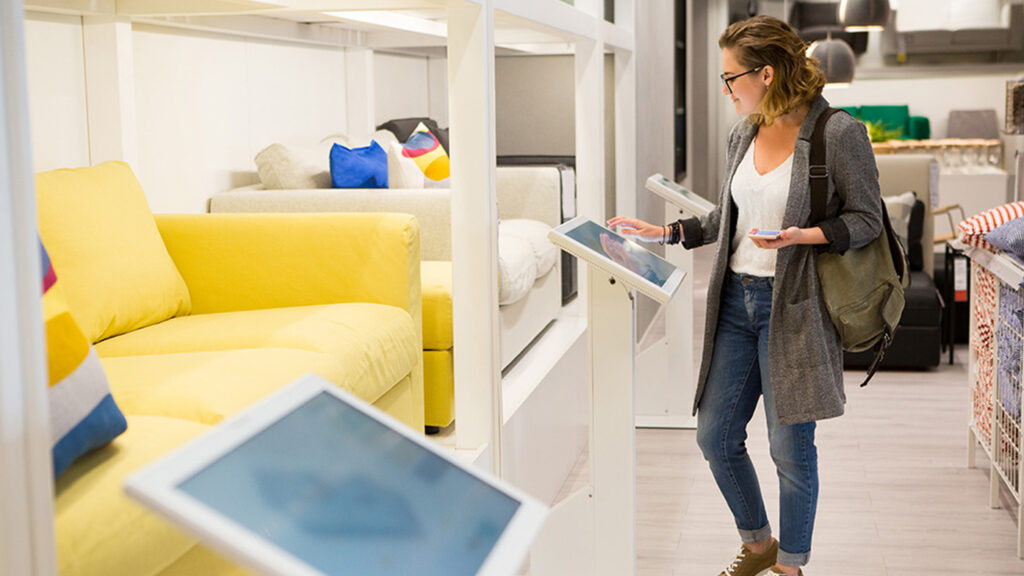Since 2020, many digitally native brands are now turning to physical locations to help expand potential reach. These brands are proving that more comprehensive approaches are critical to driving growth. As a result, we anticipate retailers to focus on an optichannel approach versus omnichannel, optimizing all channels in play.
E-commerce sales as a percentage of total retail sales peaked in the second quarter of 2020, reaching 16.4%. Since then, e-commerce sales have retreated to 14.7% at the end of 2022. Though online sales have scaled back over the past few years, e-commerce sales remain strong and are expected to grow as the retail industry’s future will likely involve a mix of online and in-person shopping. Opening a physical store can significantly increase online sales, as retailers that opened brick-and-mortar locations experienced an average sales increase of 37% in their respective geographic areas.
By combining the convenience of online shopping with the personal touch of in-store experiences, retailers can provide a more comprehensive and engaging shopping experience for their customers. It’s all about flexibility for the consumer. Retailers can improve customer loyalty and increase sales over time by using customer data to make product recommendations, provide personalized discounts, and offer customized promotions.
 Nicole Larson
Nicole Larson
“By combining the convenience of online shopping with the personal touch of in-store experiences, retailers can provide a more comprehensive and engaging shopping experience for their customers.”
For example, Target has done a great job establishing itself as a true leader in the omnichannel space. They recently announced that they would soon offer Drive Up Returns, allowing customers to make free returns while staying in their cars. Target’s same-day services have grown over the past four years to account for over half of its digital sales.
Optichannel services will force retailers to consider new store formats, including more space for fulfillment and a deeper merchandise assortment. These new store formats will have brands focusing on tailoring their products and marketing strategies to specific local markets, recognizing the importance of understanding, and respecting local culture and consumer behavior. In addition, the entry of more chains into the retail mix creates greater brand diversity and offers a vast, new pool of potential tenants. By 2025, we estimate that a physical location will fulfill 30.5% of all digital transactions.



 Aaron Jodka
Aaron Jodka
 Anjee Solanki
Anjee Solanki